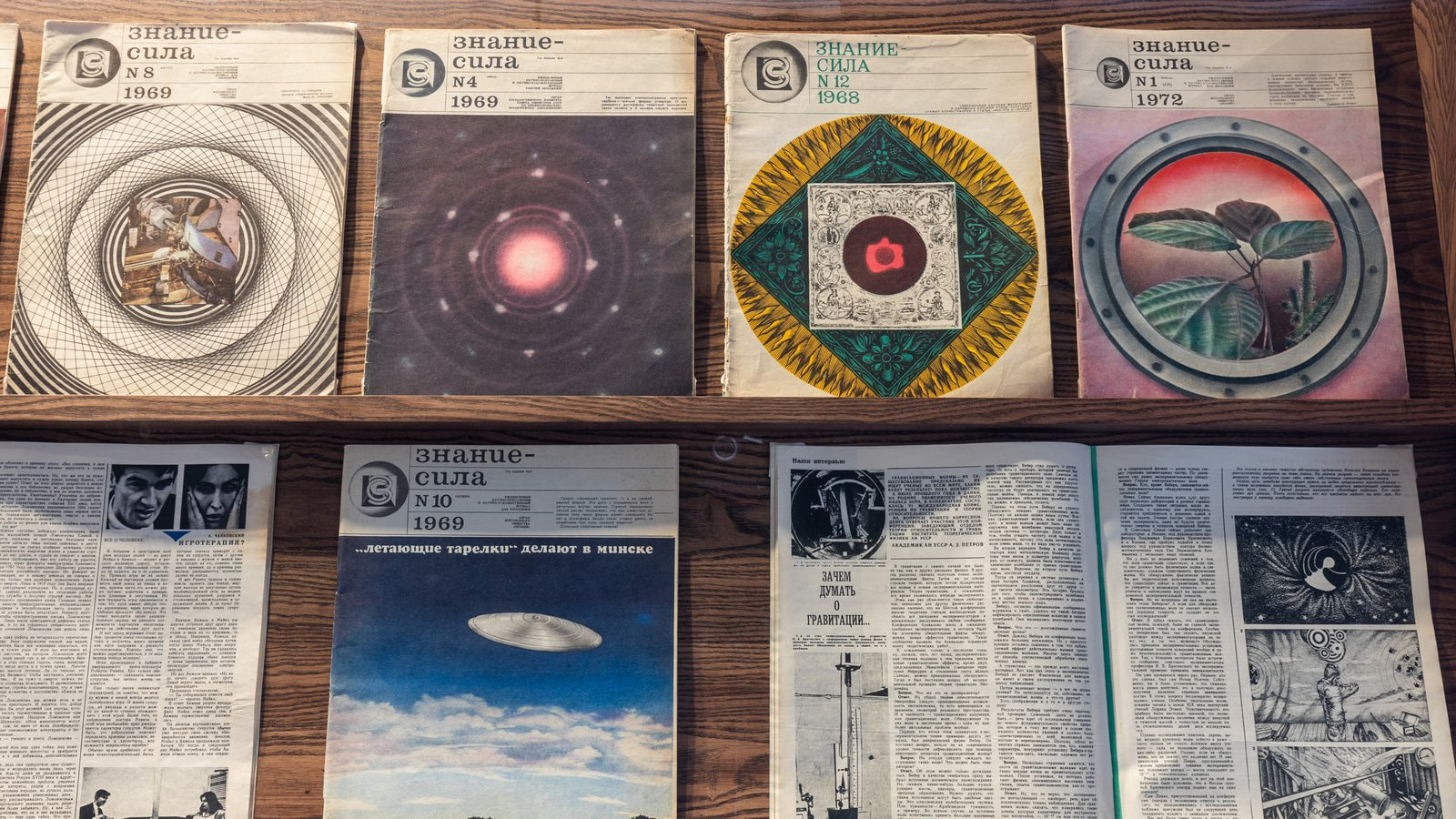Sekretiki No. 14. Science and Science Fiction

Journal Znanie — Sila [Knowledge is Power], 1968–1978
Editor-in-Chief: Nina Filippova
Head Designer: Yuri Sobolev
Garage Library
Under the editorship of Nina Filippova the circulation of the popular science magazine Znanie – Sila [Knowledge is Power] sky-rocketed from a modest 200,000 in 1964 to 700,000 in 1967. This was a result of her strategy to build a bridge between the sciences and the general public by providing insight into the reasoning processes that permeate the field of science, and by emphasizing creative thinking as part of them. Articles on space exploration, chemistry or engineering were combined with reports on discoveries in the fields of archeology, ecology, and recently rehabilitated branches of the social sciences and psychology. As with dreams, which digest the challenges of the day during sleep, the magazine’s rich combination of overlaps between academic disciplines was pieced together by literary works of science fiction.
Stories by the Strugatsky brothers, Kir Bulychev, Volodymyr Savchenko, and translations of works by Stanisław Lem, Isaac Asimov, and Poul Anderson (with a foreword by the Soviet science fiction master Ivan Yefremov) captivated readers and inspired the artists who contributed to the magazine’s visual identity. As it was considered to be an applied art, illustration enjoyed comparative freedom as compared to the ideologically constrained fine arts. This advantage gave illustrators the opportunity to use the grammar and narrative- building structures of modern art as metaphors within graphic design. It was Alexander Dobritsyn and his friendship circle of semi-independent artists—including Ilya Kabakov, Ernst Neizvestny, Eduard Steinberg, and Evgeny Bachurin—who made the magazine famous for its surreal or abstract illustrations, frequent references to the great masters of art history, experimental typefaces, and almost psychedelic subjects.
Letters of complaint addressed to the editor from confused readers and official accusations of anti- Soviet aesthetics coincided with news policies brought in under Leonid Brezhnev. The cover designs went through radical changes thanks to new artistic director Yuri Sobolev, who transformed them into cryptic mandalas using the safest visual medium from the point of view of ideology—photography. The employment of a circular shape, similar to the porthole of a spaceship or the glass cover of a sekretik, announced a shift into the universe of secret knowledge, coded language, and reading between the lines.
